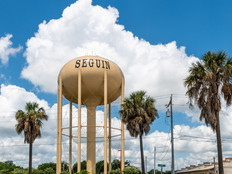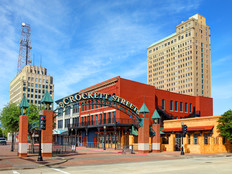Movin' On Up: City of Diamond Bar Swaps "Minivan for a Sports Car"
When city officials in Diamond Bar, Calif., earlier this year moved into a new building complete with a state-of-the-art network infrastructure, it was like trading in a minivan for a sports car.
But they were careful at first not to go too fast. Leaders wanted the city staff to grow into the new Voice over IP system and its flashy features. “We didn’t want to say, ‘Yesterday you had a Ford, but today you’ve got a highly complicated Ferrari — now learn how to drive it,’ ” says Ken Desforges, director of IS for the city of Diamond Bar.
“We thought we would take the Ferrari, put it into a plain paper bag and call it a Ford, and then peel off layers as those new features were needed,” he says.
Located at the eastern edge of sprawling Los Angeles County, Diamond Bar was incorporated in 1989 and has about 55,000 residents. The city outsources many of its services, such as policing.
Until late last year, Diamond Bar officials had been leasing space for the central government building. When a larger, two-story building across the street came on the market at a bargain price, they decided to buy it.
The relocation gave Diamond Bar’s IS department the opportunity to design a new network and replace an antiquated phone system that was literally held together with duct tape during the last six weeks in the old building, Desforges says. The move to the new building occurred over New Year’s weekend, and the new systems went live on January 3.
“[The relocation] not only gave us the opportunity to upgrade things that needed to be upgraded, but it allowed us to do things we couldn’t do in the old building,” Desforges says. For example, his team deployed a video surveillance system and digital signage.
A Gem of a Project
While Diamond Bar retained its servers and desktop computers, the network got a complete overhaul with a more robust backbone. The city standardized on network hardware from Cisco Systems to make its infrastructure faster, more reliable and less expensive. Indeed, Desforges expects to save about $10,000 annually on Cisco support services.
The IS department decided to install a Cisco VoIP system to connect city hall with other government facilities, including a community center and facilities at two large parks. The VoIP system has not only improved communications capabilities, but costs less to operate than the old PBX phone system.
“Every time we needed to make changes, we had to call the phone company or a subcontractor and pay for those services,” Desforges says. “With the new VoIP system, we don’t have those expenses. This will result in huge cost savings.”
Diamond Bar also deployed a digital signage system in city hall, including video kiosks and monitors throughout the building that display current events or provide information and directions to visitors. By comparison, the city’s former location offered only printed materials from a counter. Desforges says the digital media produces a “wow factor” when visitors enter the building. “But more than a ‘wow,’ it’s an effective way to catch people’s attention,” he says.
No detail was overlooked. When roughly 40 servers were moved to the new building, IS placed them on earthquake-proof racks. “An entire rack that weighs like 10,000 pounds can be moved rather effortlessly because it moves on ball bearings,” Desforges says. “It’s just amazing.”
A Helping Hand
CDW•G offered boots-on-the-ground support by handling much of the IT build-out for the project, says David Doyle, Diamond Bar’s assistant city manager. Doyle was impressed by the expertise and professionalism of the CDW•G team.
“We were able to accomplish what our small staff could not do on its own, and we were able to do so in a relatively short time,” says Doyle. To achieve the quick cutover, the CDW•G team prepared the network infrastructure in the new building while daily operations continued in the old location.
The city’s small IS group, including Desktop Support Technician Alfredo Estevez and Network Engineer Isaac Aziz, helped orchestrate the move and the build-out with contractors.
“It was a phenomenal team effort,” Desforges says.
Travel Time
It was a race against the clock for Diamond Bar city officials as they geared up to relocate from their existing facility to another building and implement the IT infrastructure.
“The biggest challenge was the time constraint,” said Isaac Aziz, a network engineer for the California city. “It was like having a patient on the surgery table and moving him to a different location while continuing to operate.”
Because the city desired a minimum of downtime, they scheduled the move over a holiday weekend. Officials had three days to move about 115 PCs and 40 servers and have the entire infrastructure operational by Jan. 3, 2012.
Key to their success was extensive planning months in advance. “You have to have a game plan and a goal,” Aziz says. “Everybody knew what positions they were playing, they took up their spots, and everything fell into place just perfectly.”






